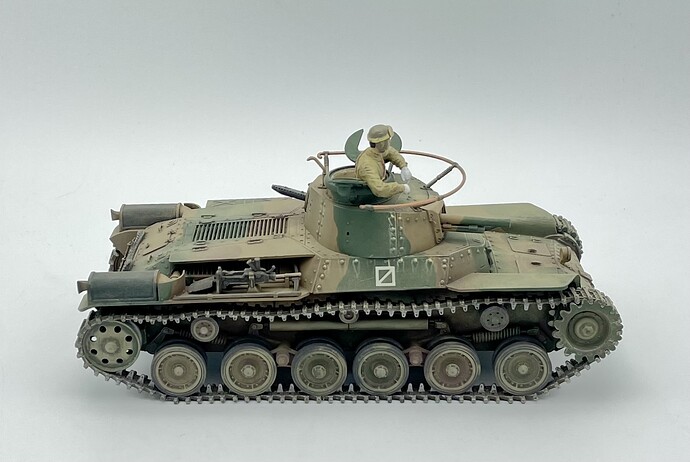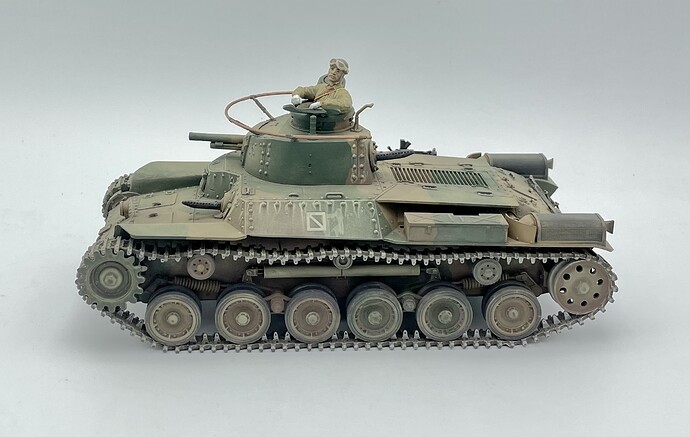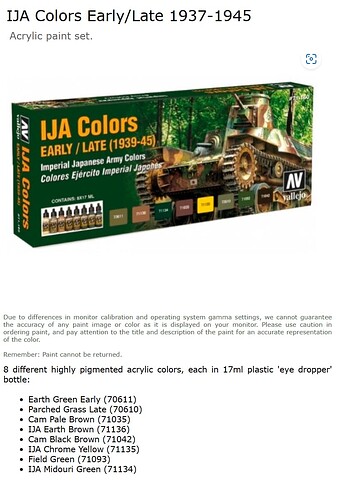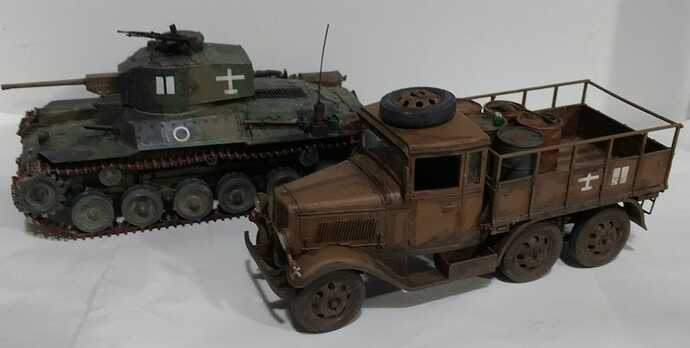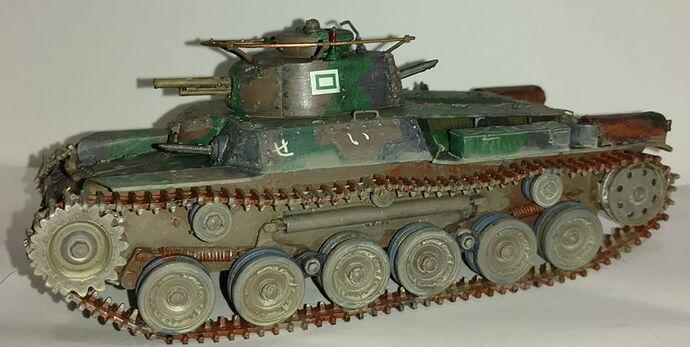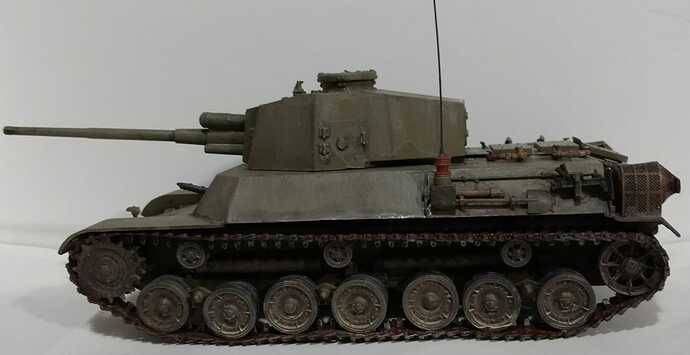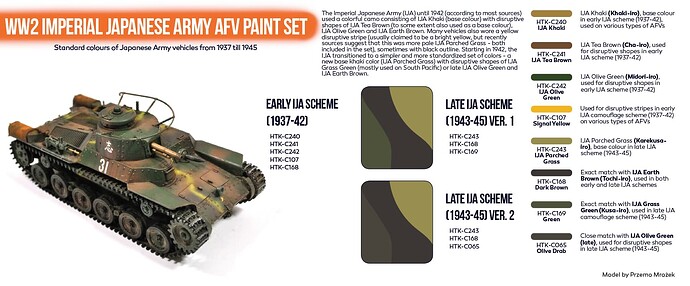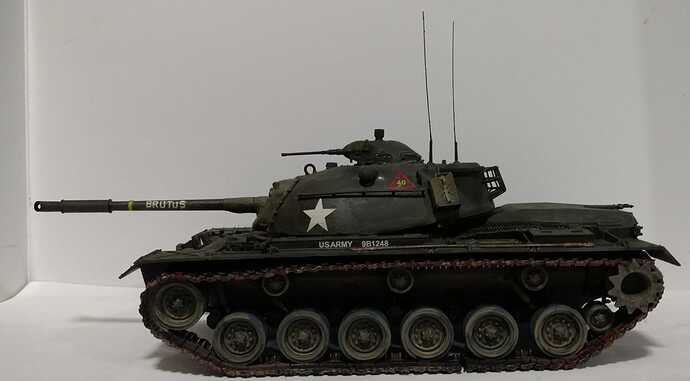My Tamiya instructions do not come with any color patterns or color list for the Type 97 Late tank. If you are privy to any of that information and could share it, I would be grateful.
The Japanese used a three color scheme in the war: khaki tan, a leaf green, and a red brown, usually in a hard edged pattern. There was no standard pattern of painting used. The yellow dazzle bands were pretty much discontinued after the early 1942 offensives.
These are the Gunze Mr Color version of the colors on my Chi Ha. Of course under the weathering, the red brown and khaki don’t contrast that much from each other.
I see this set at Scalehobbiest. However I do not know anything about this brand, no experience with it.
Are there other suggestions about color matching to another brand?
The instructions from the 1987 boxing state:
“Camouflage painting for the Type 97 tank was as follows: First, the overall vehicle was spray painted khaki then, a cloud pattern in flat brown and dark green was brush painted on. There was no fixed rule as to the camouflage pattern as it seems that the painters were allowed complete freedom in the painting.”
“Refer to box side for camouflage scheme.”
The color list includes Tamiya XF-10 Flat Brown, XF-49 Khaki, XF-61 Dark Green, and XF-64 Red Brown.
Red Brown is used for various wood parts but I cannot find anything that uses Flat Brown. Therefore, my guess is that the instructions intend overall XF-49 Khaki, over painted with XF-10 Flat Brown and XF-61 Dark Green.
AK makes a similar paint set to the Vallejo set you linked: WWII JAPANESE ARMY AFV COLORS
The text of that product includes the following:
"A 3rd Generation acrylic paint set featuring the six basic camouflage colors used for painting vehicles of the Imperial Japanese Army during the World War II and the preceding conflicts in the late 1930s.
Until 1942, multicolour camouflage patterns consisting of IJA Khaki (base color) or IJA Tea Brown (also used as a base color according to some sources), IJA Earth Brown and IJA Green or IJA Dry Grass were in use. In the 1930s, the camouflage patches were additionally bordered with black lines. In the early WWII period the camouflage patterns were sometimes supplemented with wavy cruciform bands centred on the top of the vehicle that had been applied with IJA Dry Grass or a bright yellow color.
From 1942 until the end of war the camouflage schemes usually consisted of IJA Dry Grass (base color), IJA Earth Brown and IJA Grass Green."
Is there a particular paint brand you prefer? I found a number of websites with tables or algorithms that convert colors across brands but they are kinda messy to use.
IPMS-Toronto has an article on IJA colors. Can’t find it now. Hataka has a set that has info on the back.
Top,
IJA tanks are a focus of mine and I have built and painted many. See my How To Paint An IJA Tank as a ready reference guide. In it I highly recommend the Hataka Orange Line Lacquer IJA set.
They are excellent paints and are the best out of all the IJA sets on the market. I have used them all. I did experience tip dry and clogging with the Vallejo set, which can be alleviated with retarder and flow aid, but the Hataka set shoots superbly right out of the bottle. Harvey Low’s AMPS presentation that Frenchy linked to is an excellent guide through all the color combinations and patterns throughout the war. Also, I have the complete AJPress series on IJA armor so if you have any questions on colors or patterns, feel free to ask.
Thank you!. I am becoming enlightened! Thank you again I now have a positive direction.
Hataka’s OD in this set works great for 50-70s US Army OD too. M48A2. C Troop,1st Squadron, 14th Armored Cavalry Regiment. Fulda, Germany. 1962
Thanks Frenchy. That was what I was looking for but could only find it referenced as a book. Guess they sell it on paper. How 20th Century.
